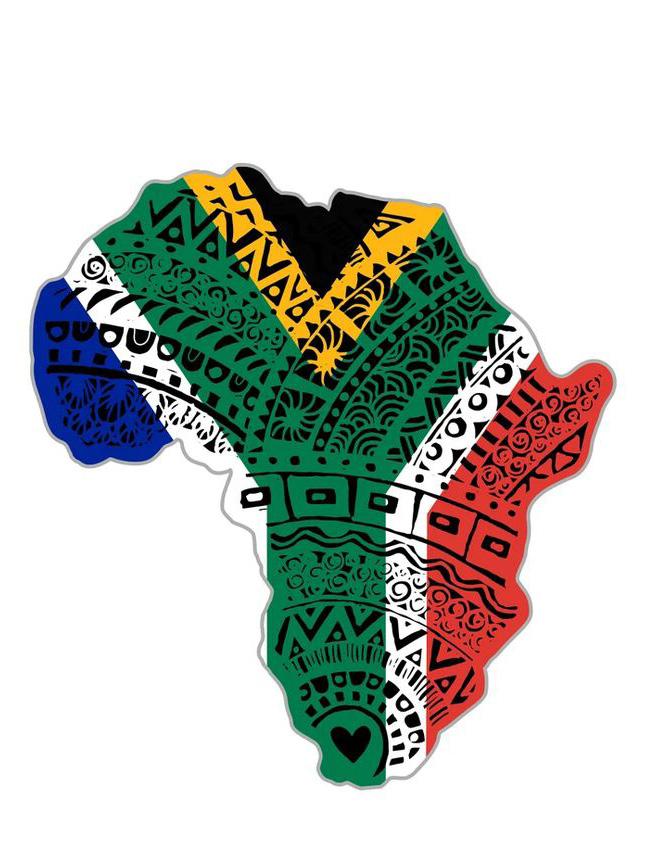

Professor Tembisa Ngqondi
Philani Nombembe
nombembep@cput.ac.za
NEWS
Jim Mohlala
mohlalaj@cput.ac.za
Submit
to nombembep@cput.ac.za or mohlalaj@cput.ac.za




Professor Tembisa Ngqondi
Philani Nombembe
nombembep@cput.ac.za
NEWS
Jim Mohlala
mohlalaj@cput.ac.za
Submit
to nombembep@cput.ac.za or mohlalaj@cput.ac.za

Time flies. It has been a year since FID Pulse first landed in your inbox. The journey has been a learning curve. It has helped us understand more about the environment we work in and the people we write about.
On a broader note, South Africa’s literacy levels remain worryingly low, especially among primary school children. The challenge continues through to higher education. Parents are often urged to instil a culture of reading at home, but we also need to lead by example. To support this, we are introducing a regular book review feature. We would like to hear what you are reading and your thoughts on those books.
In this edition, we share how FID marked Heritage Month. The celebration was both meaningful and inspiring.
Enjoy
Jim Mohlala News editor
By Jim Mohlala
What kind of garment can tell the story of Africa’s heritage?
The Faculty of Informatics and Design (FID) explored this question during a Heritage Day Festival hosted by the Centre for Diversity, Inclusivity & Social Change at the Granger Bay Campus this month. Fashion and Design students presented the Drape of Africa: Heritage Garments Showcase as part of the programme.
The festival also featured poetry, music, and traditional dance by the AmaXhosa Student Society. Fashion Design lecturer Sindi Papa said FID’s contribution included a mini-exhibition at the entrance of the Hotel School, featuring work from Architecture, Interior Design, and Visual Communication Design, alongside the garments.
Third-year Fashion Design students displayed heritage-inspired garments they had created in their second year. These pieces reflected diverse cultures, including Venda, Zulu, Xhosa,
AmaBhaca, Cape Malay, and Asian.
“The designs were inspired by the students’ own backgrounds and celebrated their heritage,” said Papa. “The type of fabric used indicates which culture and heritage inspired each garment.”
Papa collaborated with Architecture lecturer Sandile Busuku and Visual Communication Design lecturer Samuel Wicomb to put the exhibition together. Busuku said the Cultivating Club, which he leads, brought selected works from the African Identities exhibition staged this year and last.
“We brought some of the best pieces and displayed them at the exhibition. The students were also present and spoke about their work. It’s an extension of what we want to do — to keep exposing students to bigger audiences beyond the department,” he said.
Brightness Mangolothi, director of the Centre,
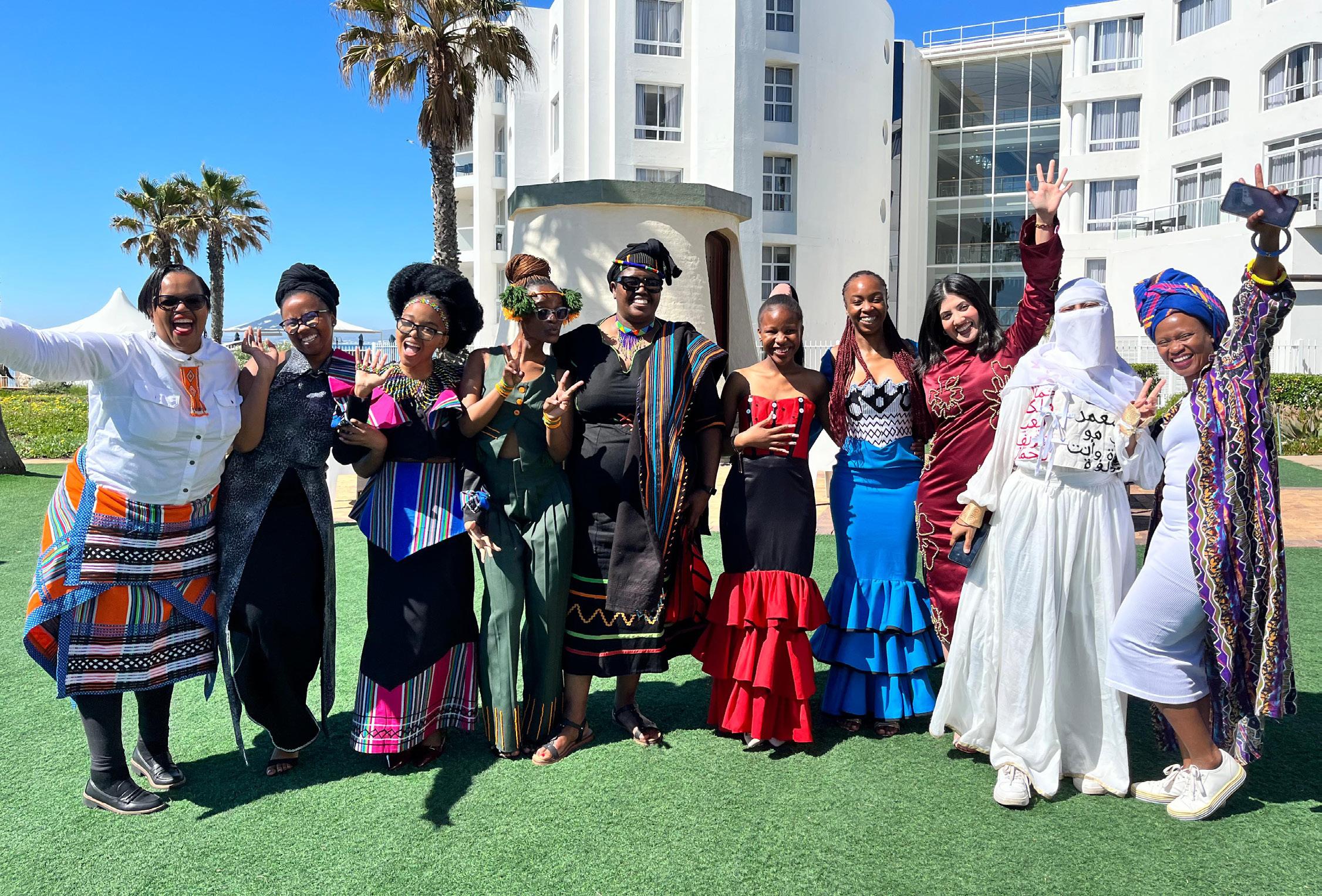

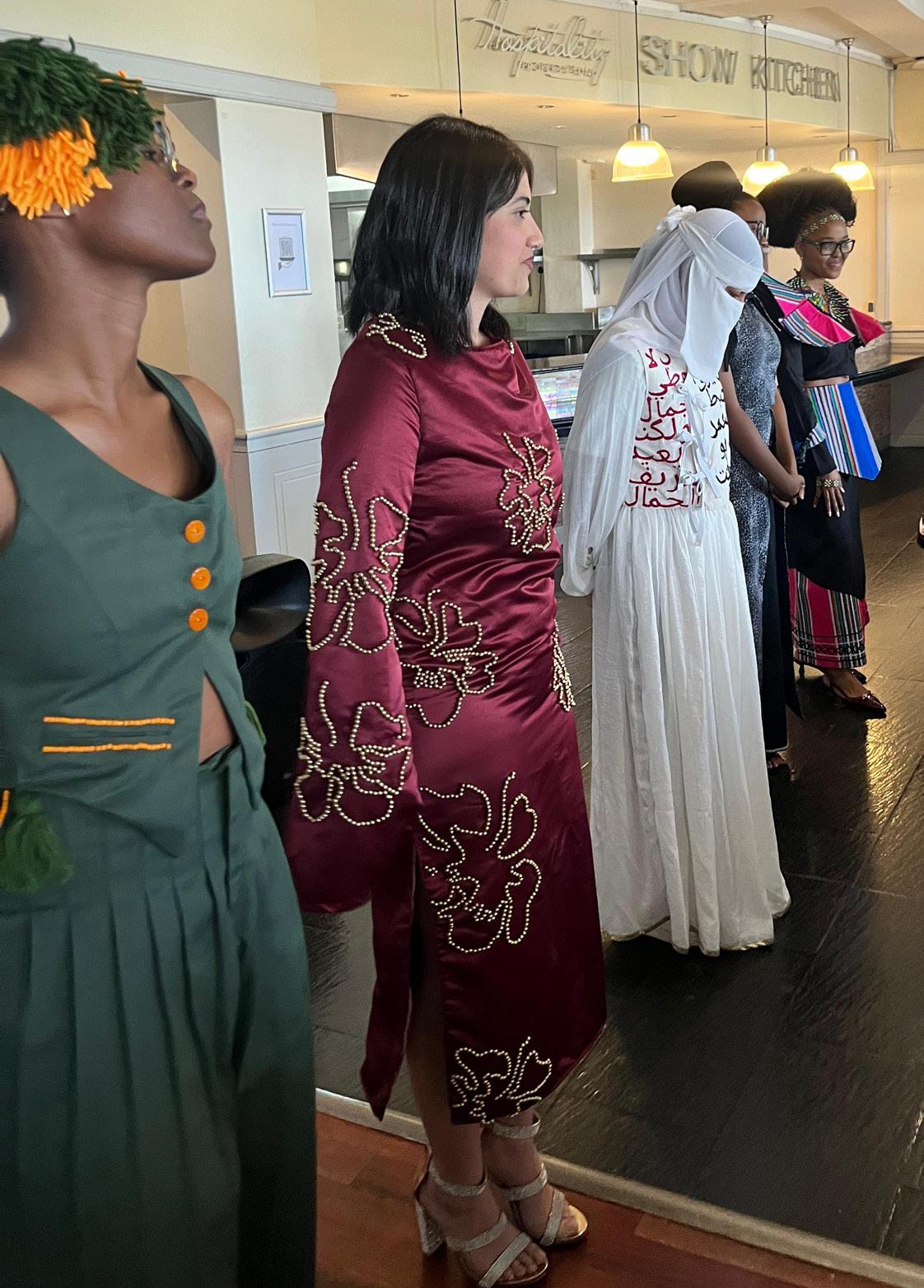
said the festival was a chance to celebrate both the institution’s diversity and its 20th anniversary. “This is a celebration that carries deep meaning for us as a university and as a diverse community,” she said.
FID Dean Professor Tembisa Ngqondi said Heritage Day serves as a reminder of African identity and the value of cultural expression.
“It is an opportunity to embrace heritage in learning and teaching, and to produce designs and artefacts that reflect the African context,” she said. Ngqondi said events like the festival build unity and provide students with opportunities to apply creativity beyond the classroom.
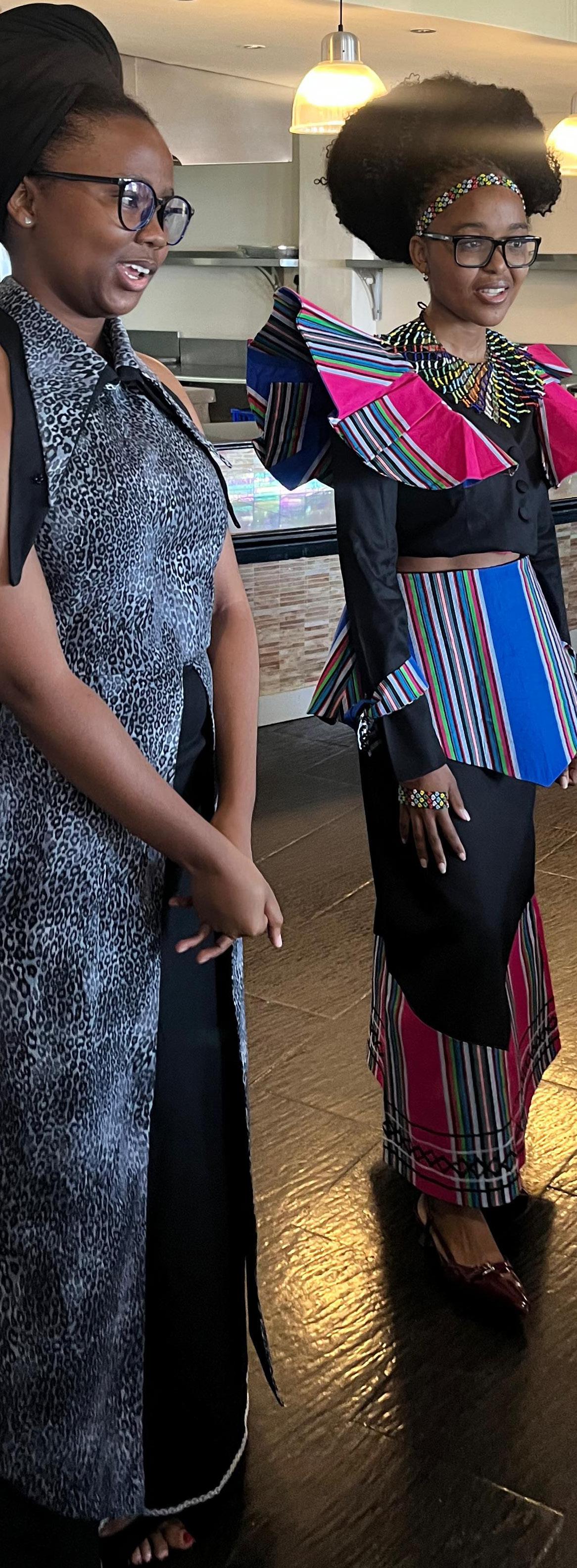
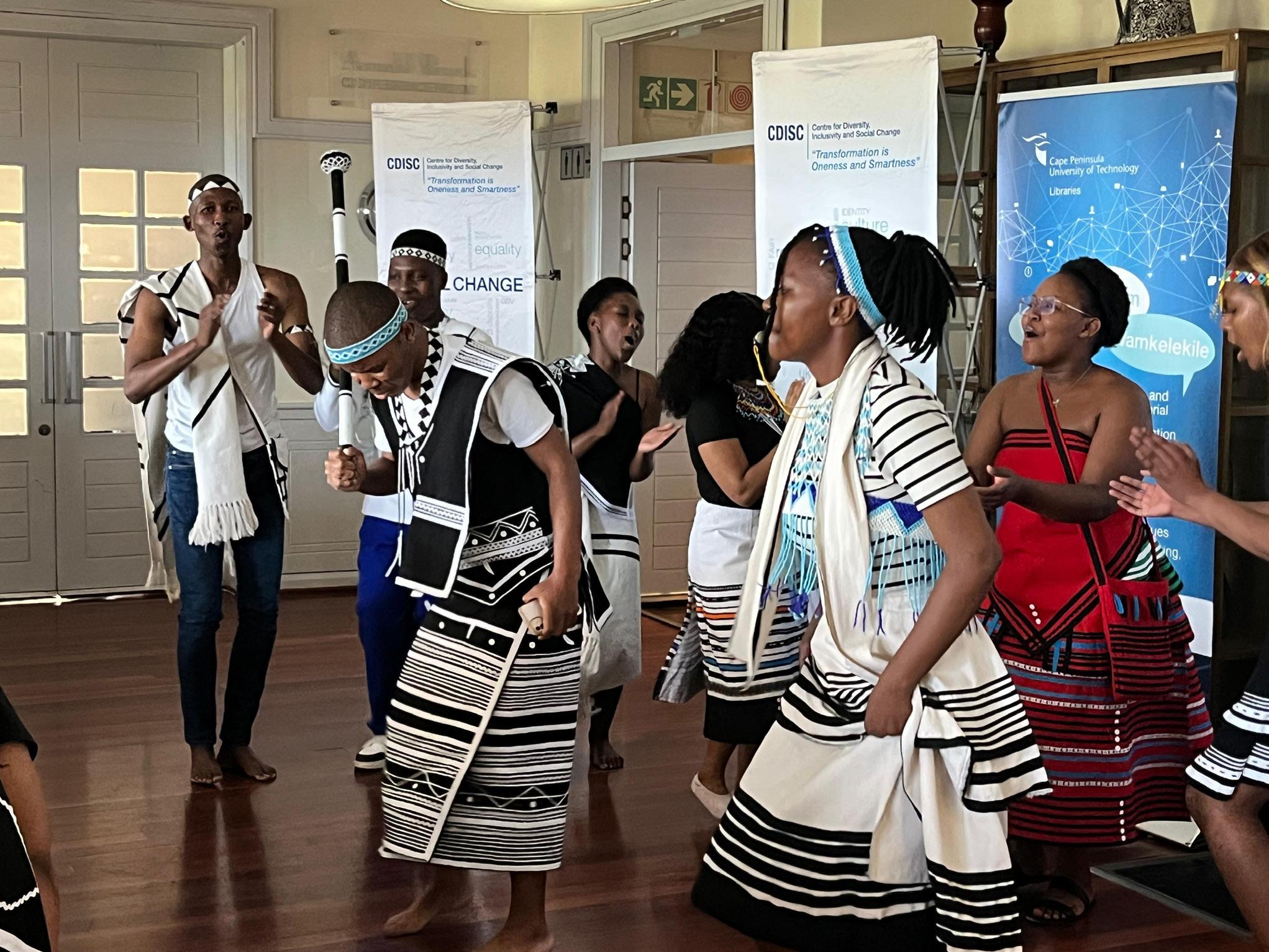



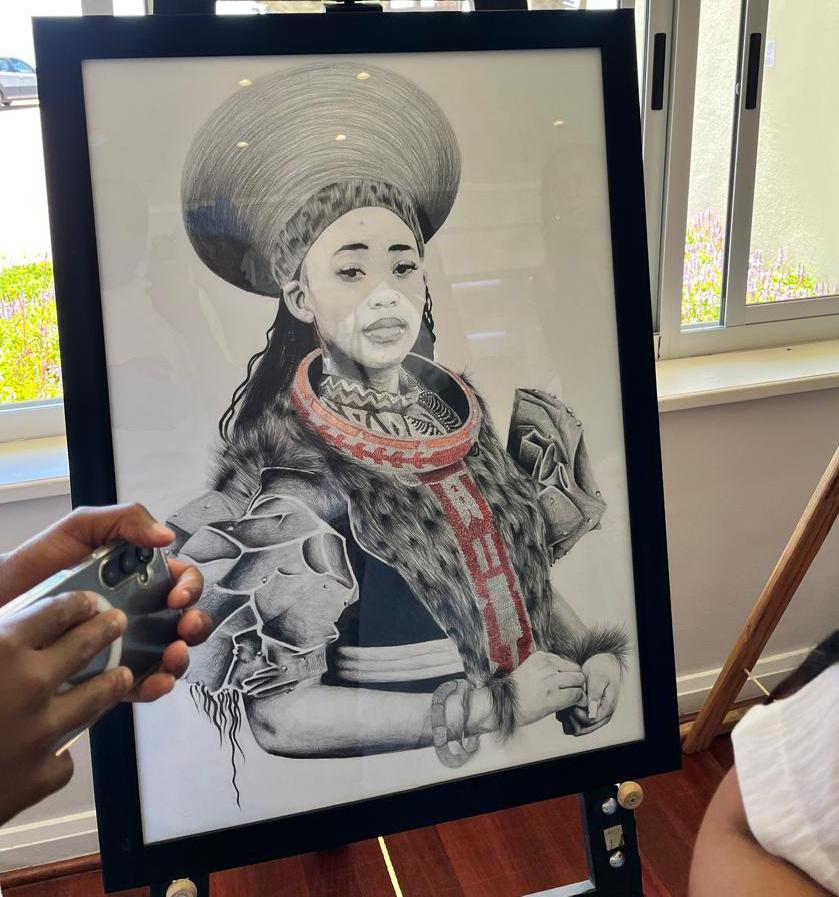
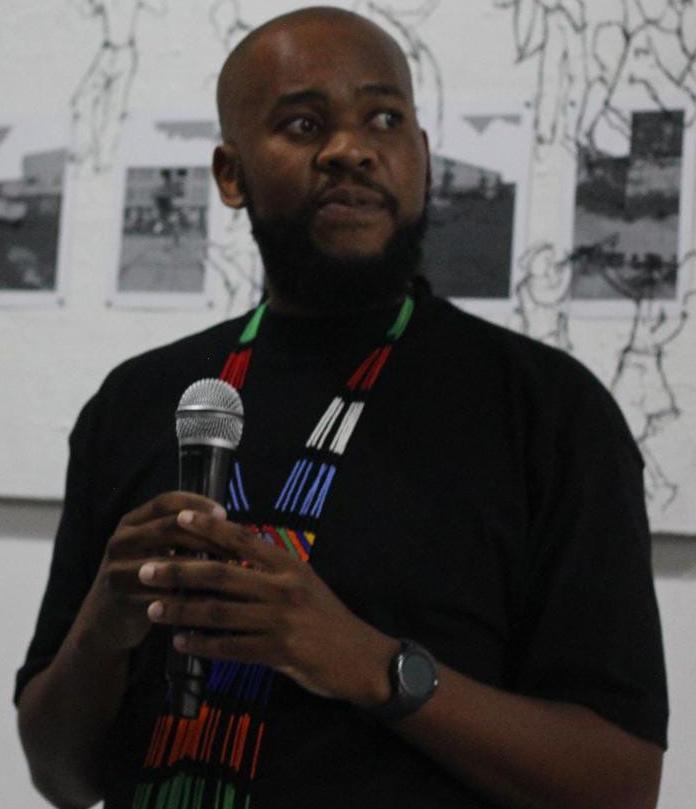
FID showcased garments and artworks inspired by diverse African cultures during a Heritage Day festival at the Granger Bay Campus.
By Philani Nombembe
Media lecturer Dr Natalie le Clue’s research into toxic fandom has culminated in a new book.
Beyond Fandom: The Dark Side of Social Media Discourse, which she edited, was published by Emerald Publishing this month. It examines how fan communities shape — and are shaped by — the “always on” nature of social media, highlighting both belonging and risks of toxic behaviour.
“This zone of toxic fandom is a particular area of research interest for me, and it has been for a few years now,” said Le Clue.
“When I first entered this area, it was still fairly understudied. But only a few years later, we can clearly see how pervasive these online practices are and how it is radicalising people to the point of extremism. Not that long ago, disagreement was simply about having opposing views. Now, it has become a mortal battleground.”
She said the topic is important because extremist views are becoming a societal threat.
“If we don’t spotlight it and attempt to understand what characterises it, we are never going to be in any sort of position to try to combat it.”
Asked about positive findings, she said: “My specific area of research interest is toxic fandom. I am afraid there isn’t much positivity to be found in these areas of the social media landscape. However, my postdoctoral work, which expands fan studies to a South African context, has revealed some interesting findings.”
“From the initial study, published in Persona Studies, it was interesting to unpack the dichotomy between some Western and South African political fandoms. The Western narrative was often driven by highly charged toxicity, while the South African discourse seemed more measured and considered, indicated by the deliberate use of language and sentence structure.”
Her postdoctoral work also explored humour in South African online discussions about COVID-19 vaccination.
“I found it to be not only a stark contrast to the Western-centric discourse but also an eloquent representation of South Africanism,” she said.
Le Clue said social media is now the primary driver of toxic behaviour.
“There is no more separation between online and real-life identity. Because of beliefs, values, and emotions, these identities have merged. This shows us the increasing relevance of these spaces.”
The book features other scholars. Anthony Dannar examines how fan culture’s creative practices can spread hate-driven ideas. Another chapter focuses on Malaysia and how digital hate speech fuels division. Le Clue’s own chapter looks at the South African political movement Operation Dudula, showing how fandom logics reshape political ideologies under “patriotism”.
“What these contributions, to name a few, show is how fan practices, when mobilised through social media, can normalise hostility and legitimise exclusion,” she said.
On the “always on” nature of social media, she said, “fans are always engaged”.
“Some fandoms have manoeuvred into positions of power to mobilise users towards specific goals. We see this in
Renee Ann Drouin’s research on video game culture and in Line Nybro-Petersen’s chapter on the cultural authority of fans. This collection provides a vital lens for understanding how fan practices shape communication,” said Le Clue. Le Clue hopes the book will raise awareness. “
“My biggesthope is that people become more aware. Firstly, to understand fan studies as more than an isolated niche area. It has evolved into a framework for understanding digital fandoms and mass communication as a reflection of contemporary culture,” she said.
“The intention of compiling a collection like this, with perspectives from around the world, is also to promote awareness of how the virtual and real worlds increasingly influence each other. It is essential to understand what al-
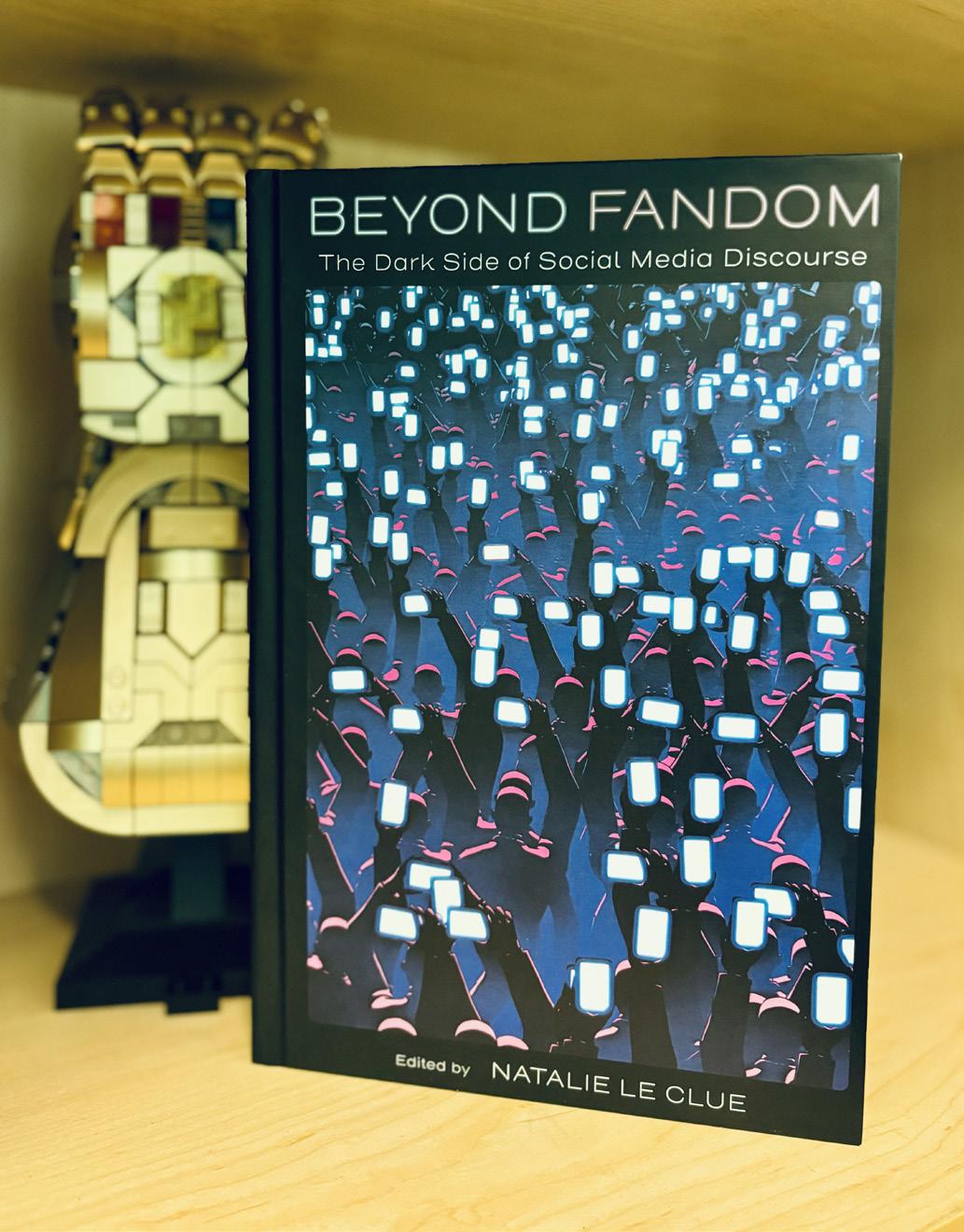
lows harmful behaviours to flourish online, so we can begin to see the potential implications.”
Her PhD focused on fairytale narrative and character analysis. She said her move into toxic fandom followed teaching a new media class.
“It prompted a train of thought about the shifting of moral boundaries; how the boundary of what had previously been acceptable was being pushed further and further, resulting in a ‘new normal’ where the ideology of morality was, and is, being co-opted by online communities that are, in many cases, performing as spaces where toxicity spreads unrestricted,” she said.
“I passionately believe any conversation or teaching approach to media culture or mass communication is incomplete if it does not engage through the lens of fan studies. Fan studies offer a critical framework for understanding how audiences participate in and transform media practices. Without this lens, the understanding of media is reductive.”
By Jim Mohlala










Initially conceived as a platform to showcase the faculty’s work, FID Pulse has, a year later, found strong resonance with industry.
Faculty of Informatics and Design Dean, Professor Tembisa Ngqondi, said the newsletter had grown beyond expectations to become the faculty’s information hub.
“The vision was to find a medium to communicate and celebrate the work of the faculty. At the same time, we wanted to create a platform where students could gain practical exposure to what they will encounter in industry,” Ngqondi said.
used as a source of reference for our reports and an important record of our growth,” Ngqondi said. She said that it also enables students to engage with staff and external stakeholders.
“My wish is that it grows beyond a faculty newsletter and even finds its way to retail shelves, attracting third-stream income for the faculty,” said Ngqondi.
“I would also like to see a student-focused edition highlighting their stories. Most importantly, we aim to improve its design, with categories that draw readers’ attention.”







The concept was developed when journalism lecturer Philani Nombembe proposed a faculty magazine and suggested the name FID Pulse.
Ngqondi said the early stages were challenging, with some departments slow to share stories.
“It took commitment from the editors and support from departments who understood the vision to build momentum,” she said.
Planned as a quarterly, the publication quickly became monthly due to the volume of stories.
But it has grown into an archive of the faculty’s journey, expanding from celebrating academic achievements and innovation to profiling alumni and recognising international students.
The newsletter has also attracted attention from industry partners who have reached out for collaboration.
“FID Pulse has become the faculty’s repository. It is
“It took commitment from the editors and support from departments who
By Jim Mohlala
The Department of Media and Communication may not have been on air, but it recently had the chance to share career insights with some of Cape Town’s top radio hosts.
The department, which comprises journalism, public relations and communication, film production, and photography, was invited to the Heart FM Career Expo last month. Public Relations and Communication lecturer Siyabonga Mzizi said the initiative aimed to build lasting partnerships.
“Our goal was to showcase the programmes we offer and demonstrate how they can help media professionals grow their careers. It’s about creating lifelong connections and promoting lifelong learning,” Mzizi said.
He said the department hopes to expand its outreach.
“We are exploring similar engagements with other media houses, particularly to attract postgraduate students. Many people working in media already have an undergraduate qualification, and CPUT (Cape Peninsula University of Technology) can offer them a life-changing academic experience,” he said.
For Heart FM intern reporter Oyisa George, who completed both her diploma and advanced diploma in journalism at CPUT,
said the expo felt like a return home.
“What I learnt at CPUT applies in the real world. While practice is different, my foundation prepared me well. I’m hoping to pursue a postgraduate qualification to take my career to the next level,” George said.
Heart FM’s head of finance, Brendan Murray, said hosting the expo was about investing in staff development.
“The main goal was to connect our team with institutions like CPUT, exposing them to continuous learning opportunities. We want our staff to remain agile in a fast-changing media environment,” he said.
He said the Media and Communication Department is helping shape the next generation of professionals.
“This collaboration allows our staff to align academic opportunities with industry needs, from digital media production to storytelling in new formats. We see this as an ongoing initiative that empowers our staff while strengthening partnerships with higher education,” Murray said.

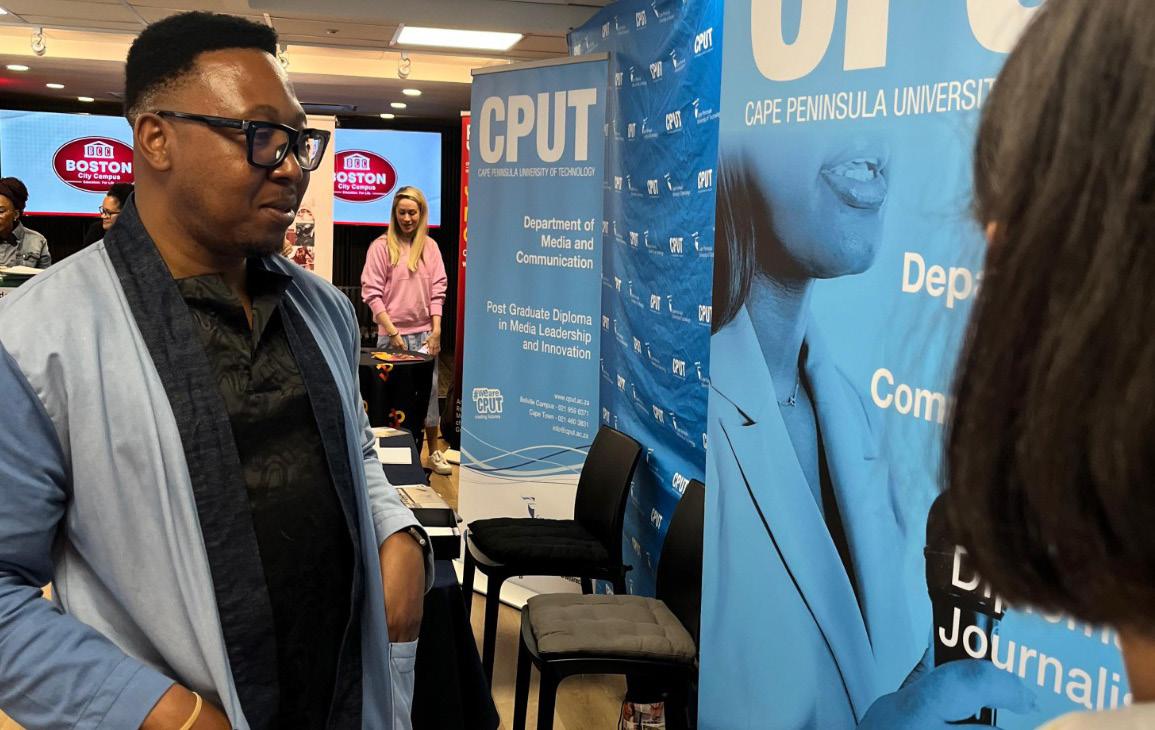
PARTNERSHIPS:

By Philani Nombembe
Faculty of Informatics and Design (FID) Dean, Professor Tembisa Ngqondi, has clinched the coveted Women in Student Development and Faculty Administration award at the Higher Education Women Leaders Awards.
The awards, hosted by Higher Education Resource Services South Africa (HERS-SA) on 28 August, also saw Ngqondi recognised as a finalist for the Women in Academic Administration category.
“Her dedication to empowering students and driving excellence in faculty administration truly embodies the spirit of leadership we honour,” HERS-SA said.
Ngqondi said the award was a recognition of hard work.
“As a leader in the faculty, winning this award is a testament of the hard work put together by students and staff in the faculty. It presents power of collaborative leadership whereby everyone matters,” she said.
“Personally, I am humbled and happy to have my hard work recognised. Professionally this is a prestigious achievement which improves my academic and leadership profile and good standing in the sector.”
Ngqondi said the award also reflected the work done by FID.
“The award presents the commitment of staff and students’ hard work, innovation, excellence, and competitive contribution to the broader community
and economic growth,” she said.
She shared some of the initiatives and milestones in student development and faculty administration that she is proud of.
“The faculty improved administration processes which afforded the faculty to receive graduation clean audit, human capital efficiencies, and financial viability by reversing the faculty financial deficit,” she said.
“In terms of students’ development, students were afforded diverse opportunities to participate in the national and international projects that showcase talent while developing. The introduction entrepreneurship opportunities through FID Design Hub became a flagship project for faculty students’ development.”
Ngqondi shared her wisdom with young women aspiring to leadership roles in higher education.
“I would like to encourage young women to pursue their leadership with integrity, stand for the truth and learn the principle of separation. Leadership is mostly achieved when you are consistent and open to continuous learning. It is doable, just prepare yourself for the opportunity,” she said. “My vision as an academic leader is to work hard to afford students and staff a conducive working and learning environment that will afford students to experience learning while they grow and be ready for world of work and or become employers themselves. This will be achieved through the closer look of the curriculum design and offering.”
By Philani Nombembe
As the Cape Peninsula University of Technology (CPUT) marks its 20th anniversary, FID Pulse revisited the Faculty of Informatics and Design to capture memories from those who witnessed its beginnings.
IT lecturer Dr. Waldon Hendricks studied at the institution and witnessed the 2005 merger of Cape Technikon and Peninsula Technikon, which led to the creation of CPUT. Today, he is the First-Year Academy Coordinator.
“My first year was at Peninsula Technikon in 2004. I enrolled for an NC: Information Technology, a national certificate for first-year IT students. That was my first time away from home in Worcester, and I was the first in my family to attend tertiary education. It was a proud moment for us,” he said.
Hendricks said CPUT has grown remarkably over two decades. “The university has become more technologically advanced, inclusive, and globally connected. We have introduced programmes aligned with the Fourth Industrial Revolution while embracing diversity and creating a collaborative, student-centred environment,” he said.
Hendricks recalled a small but memorable moment after the merger “In 2005, the new CPUT website needed photos of students at work. I was in a networking lab they asked to take my picture. Since then, I’ve been the face of the IT department on the website, a reminder of my student days,” he said.
While completing his diploma, Hendricks worked as a lab assistant at Bellville campus, helping students with logins and troubleshooting. After graduating, he became a desktop technician in the Journalism and Fashion Design programmes.
“That job taught me new software, how to support labs, and how to work with staff and students. It gave me an early glimpse of lecturing,” he said.
In 2011, he moved to the District Six campus as an IT technician.
“Sitting in meetings with academics gave me valuable insights. Later, I started teaching part-time, and my passion for IT education and giving back to the institution led me to lecturing full-time,” Hendricks said.
Looking back, Hendricks said he is proud of CPUT’s partnerships with industry.
“Collaborations with companies such as Huawei and AWS prepare our students for the world of work,” he said. His message to today’s students: “Make the most of every opportunity, both academic and extracurricular. The experiences you gain here will stay with you for life and open doors you never imagined.”

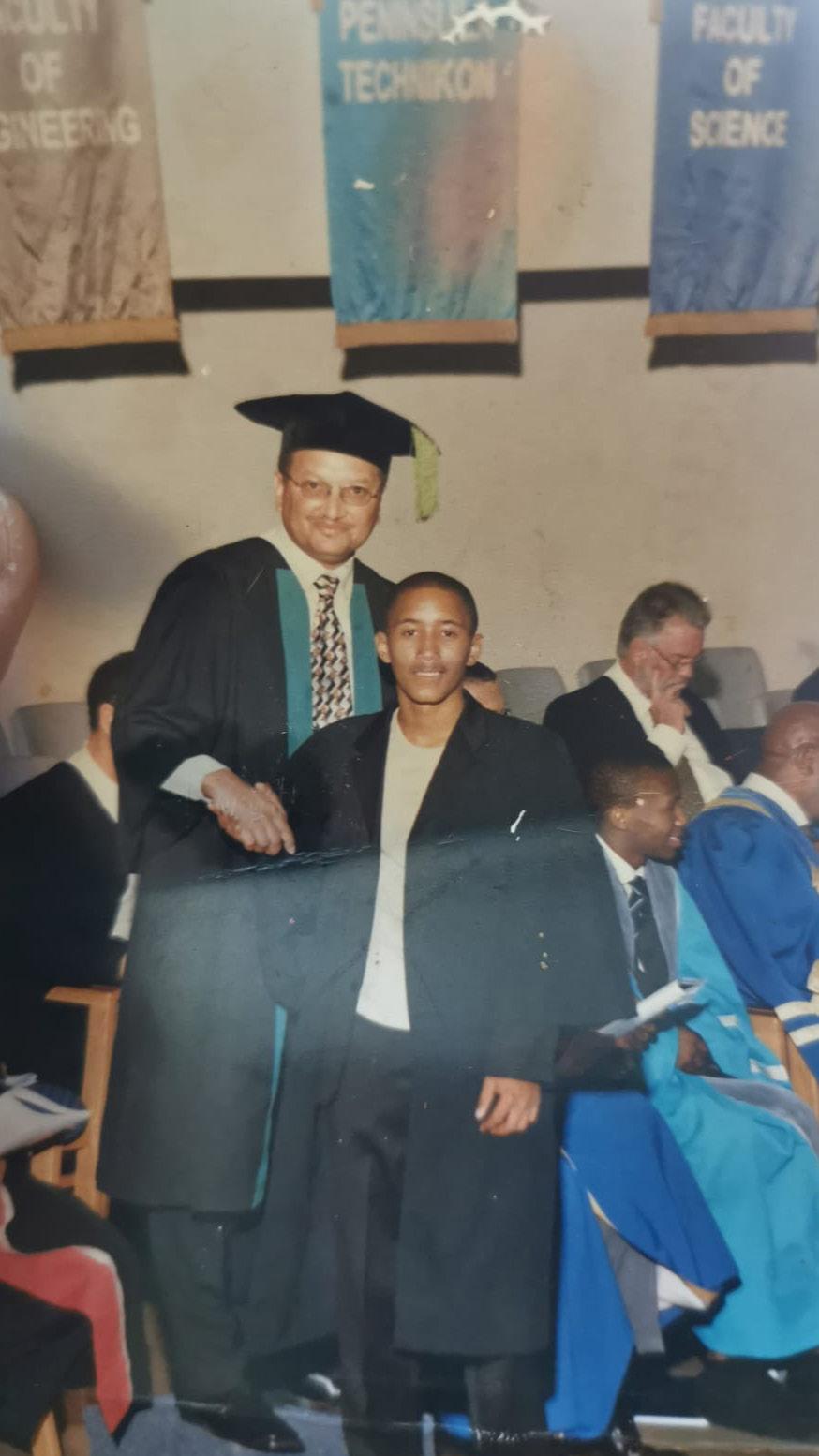

By Jim Mohlala
Dr Monica Di Ruvo, head of the Applied Design Department, has lent her sketching skills to environmental conservation.
She illustrated an endangered plant — and her image will preserve it for posterity. The drawing of the oxalis levis, found only in Malmesbury in the Western Cape, is on display at the Stellenbosch University Botanical Gardens until next year.
“I was made aware of this and other threatened plants during a visit to the Stellenbosch University Botanical Gardens, arranged through the Botanical Artists Association of Southern Africa, Western Cape region,” said Di Ruvo.
She said that one in four endemic plant species is under threat due to climate change, agriculture and development.
“This plant is very small and could easily be overlooked in the landscape. I selected it because it is critically endangered and wanted to highlight its vulnerability, but also its beauty.”
The artwork forms part of an exhibition that raises urgent questions about conservation. For Di Ruvo, art is a vital bridge between public awareness and scientific knowledge.
“Art is a powerful medium to raise awareness,” she said.
Di Ruvo spent a morning observing the plant at the gardens, sketching as its flowers slowly opened in the sunlight. She conducted further research online before starting a series of graphite and coloured pencil preparatory drawings.
“In retrospect, I should have enlarged the final drawing; this would have allowed me to show more detail,” she said.
The exhibition marks both a personal and professional milestone for Di Ruvo.
“I’ve been sketching plants for many years as a hobby, usually on holiday. This is my first work submitted to a formal exhibition, and it’s been a huge learning curve. I am excited to enter this discipline and hope to develop my skills in this contemplative art.”
She hopes the initiative will inspire others to view art as a meditative practice that deepens our connection with nature.
“Botanical art is an uplifting contribution that people can enjoy in exhibitions or online. Awareness is created through pleasurable experiences. It can also be a rewarding practice for individuals, bringing us closer to nature,” she said.
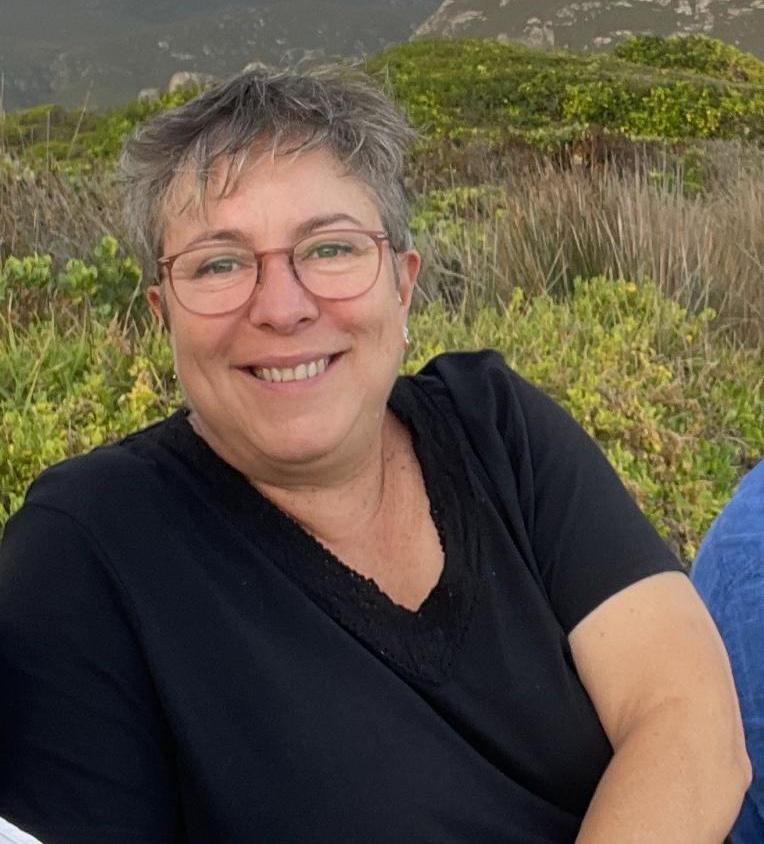
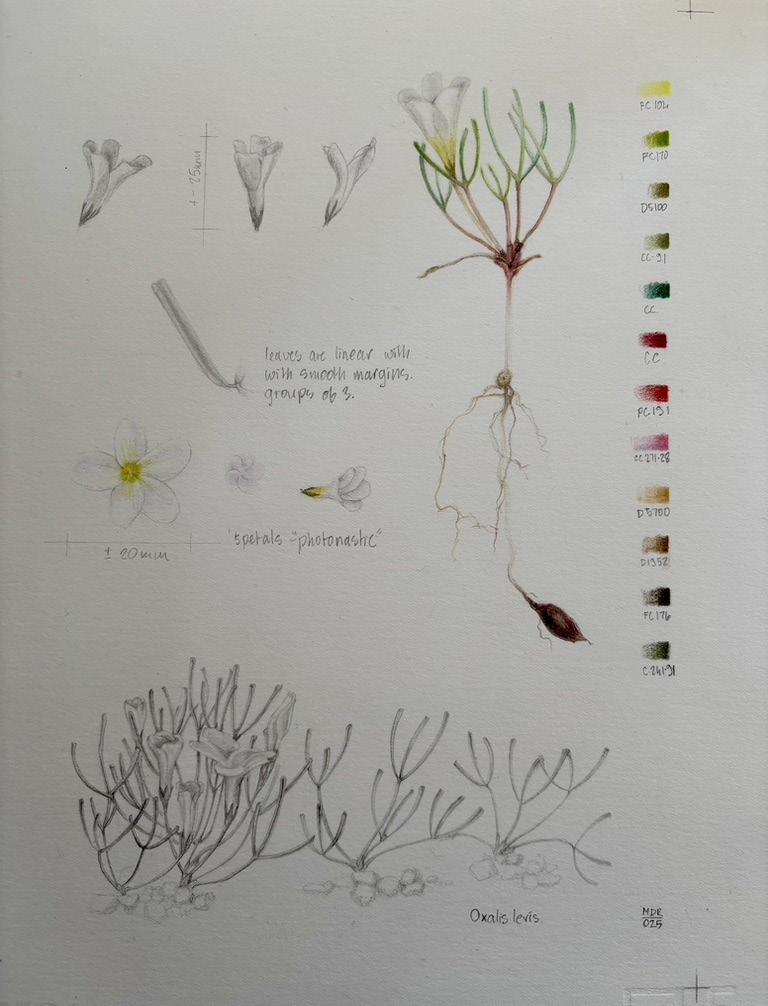
By Jim Mohlala and Philani Nombembe
The Department of Media and Communication hosted a strategic alumni networking event last month to strengthen ties with industry.
The department sought to enhance its work-integrated learning (WIL) programmes. Titled Reviving Excellence, the event took place at the Granger Bay Campus on 27 August. Head of Department Professor Nirvana Bechan welcomed guests from across the media sector.
“We’d like to know you better,” she said. Bechan said the department aimed to expand advisory boards and forge new partnerships.
“This could be through projects, mentoring, guest talks for our students, and other partnerships we can explore together,” Bechan said.
“Most importantly, we’d like you to assist us by becoming employers on our WIL programmes.” She also introduced the department’s new PhD programme. She said the department remains student-centred.
“We currently have 23 academic staff and three support staff, serving 909 full-time students this year,” she said. She said Covid-19 and new technologies have reshaped both teaching and media practice. Public Relations and Communication lecturer Donna Liedemann highlighted the value of WIL, drawing on her own experience.
“Before transitioning into academia, I spent 13 years in the PR industry. I am now pursuing my PhD in Media and Communication, and I am proud to say I am a product of the Work-Integrated Learning Programme,” she said. “It played a pivotal role in launching my career back in 2009.” Alumni also shared their experiences. News24 journalist Velani Ludidi reflected on his career journey, recalling how he covered #FeesMustFall as a student.
“It’s an honour to be here today, not just as a proud alumnus of CPUT, but as someone whose career and passion for journalism were shaped here. When I graduated in 2018, I could not have imagined the path ahead, which has allowed me to grow into one of the country’s leading journalists. Much of that foundation was laid through work-integrated learning,” he said.
“The opportunities CPUT provided — in newsrooms, on assignments, and through industry placements — were more than training.
“They were real-world lessons that built resilience, sharpened my skills, and gave me confidence to step into one of the toughest but most rewarding industries. This was possible because of the university’s strong partnerships with industry leaders, organisations, and mentors who opened doors for students like me.”
Ludidi said mentorship remains a cornerstone of his career.
“Even years after graduation, the foundation I built here guides me. Staying connected to CPUT reminds me that we are part of a larger network of alumni, students, and industry partners working together. Collaboration across disciplines — journalism, design, communication — is vital. Gatherings like this show the strength we have when we work together,” said Ludidi.
“I want to express my pride in the Department of Media and Communication. You’re not just training students — you’re shaping voices that will tell our stories, challenge society, and build our future.
Through continued partnership and community, this department will only grow stronger.”
Film producer and alumnus David Fanciscus spoke of how WIL laid the foundation for his career.
“It’s an honour to stand here as a proud CPUT graduate. The work-integrated learning programme was a turning point. It was like a crash course in craft and attention to detail, and that discipline still shapes my work today as a filmmaker and producer,” he said.
He also highlighted a postgraduate study in the United States, arranged through CPUT, which broadened his perspective.
“It was eye-opening. I came back determined to build the South African film industry, tell stories rooted here, and create opportunities for others,” Fanciscus said. Guests were treated to performances by musician Amy Tjasink and the iThemba Youth Choir.




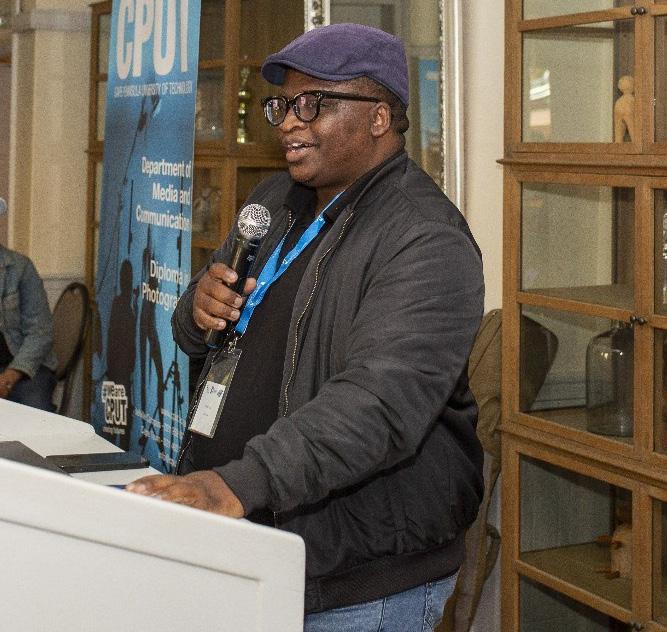
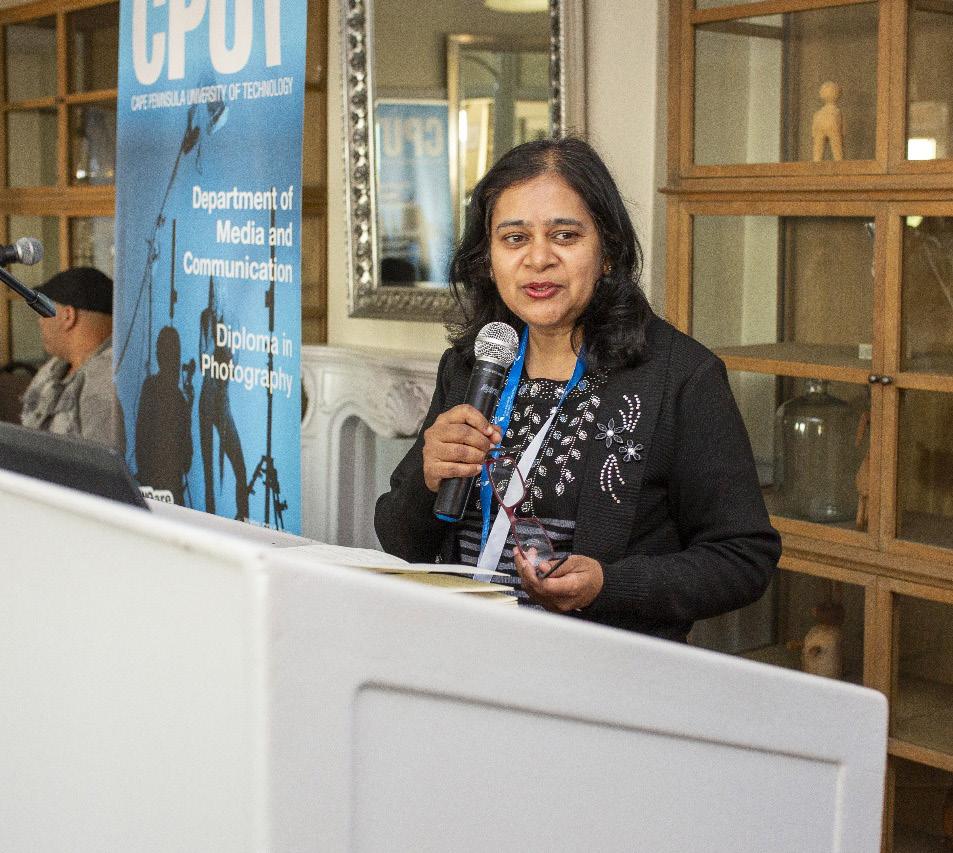
By Philani Nombembe
The IT Department’s partnership with the Southern African Computer Lecturers’ Association (SACLA) is beginning to yield results.
Dr Tabisa Ncubukezi, head of the department, reflected on the collaboration after attending a HoD meeting at the SACLA 2025 conference in Bloemfontein last month. The annual event promotes collaboration and dialogue on computing education in South Africa, bringing together academics, researchers, and practitioners to share insights on computer science, information systems, and IT.
Ncubukezi said the HoD meeting provided a frank exchange on both challenges and opportunities.
“The common challenges were related to staffing, student uptake of AI, and poor attendance,” she said.
“At the same time, HoDs identified opportunities to collaborate on projects and funding, and to share best practices for addressing these issues.”
Her department has already seen tangible benefits.
“We sourced external examiners from the pool of academics who attended the conference, and we are now exploring collaborations with other institutions on research funding applications. There was also strong interest in exchanging approaches to the use of generative AI in education,” she said.
Ncubukezi said South African institutions need to prioritise future-ready curricula, inclusive technologies, ethical digital transformation, and strong industry linkages.
“These steps will ensure our graduates are equipped to address local challenges while promoting the commercialisation of solutions,” she said.
Ncubukezi said the role of IT HoDs is shifting. “In my view, the role has evolved from being primarily administrative to becoming a strategic driver of transformation in higher education. It now requires balancing academic excellence with industry relevance, ensuring digital transformation is inclusive, and preparing graduates to thrive in a technology-driven future.”
Ncubukezi also reflected on key lessons from the conference.
“In teaching, we should prioritise problem-based and project-driven learning where students tackle real industry challenges,” she said.
“In research, we must pursue more interdisciplinary work that addresses local needs while retaining global relevance. For innovation, we can create hubs where students and staff co-create with industry and community partners.”
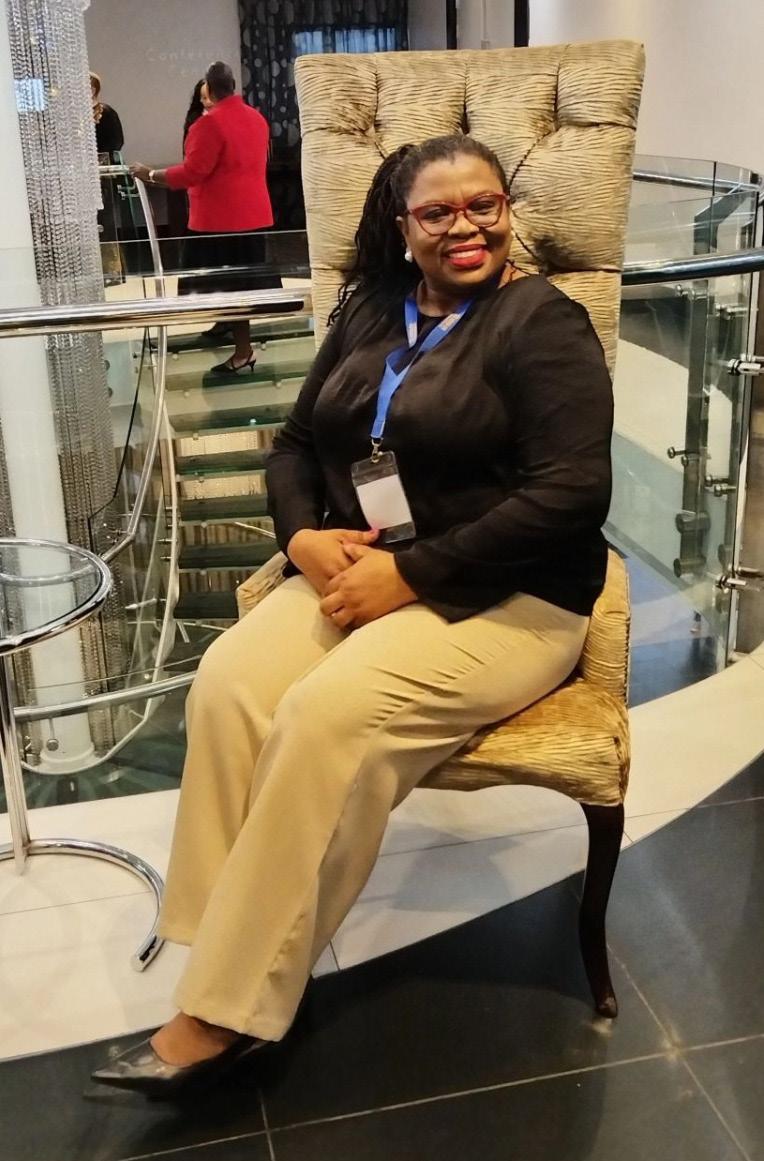
By Philani Nombembe
Local communities are recognising the Faculty of Informatics and Design’s (FID) contribution to South Africa’s skills pool.
Cape Town community radio station Zibonele FM featured FID Dean Professor Tembisa Ngqondi on its programme Sihamba Nawe 629 this month, sparking discussions about possible collaboration.
One opportunity could see Fashion Design students’ work showcased at the Khayelitsha Fashion Week in December. Zibonele FM breakfast show host and director of the Khayelitsha Fashion Week Bongani Matenjwa said he wanted to give FID students a platform to demonstrate their skills.
“The Dean was here for our Sihamba Nawe 629 feature, where we highlight women’s stories and journeys. Beyond that, we spoke about the possibility of CPUT designers participating in our fashion show and other events. This year marks our 10th anniversary, which we will host at the V&A Waterfront,” said Matenjwa.
Ngqondi said the proposed collaboration came at the right time.
“The faculty is reviving the campus radio. Partnering with Radio Zibonele and Khayelitsha Fashion Week could give our students hands-on experience in live radio, while the faculty can also bring in presenters as guest lecturers for our broadcasting students,” said Ngqondi.
“The Fashion Week will provide valuable platforms for our Fashion Design students to showcase their work.
“The live interview with the Zibonele team was inspiring. Sharing our journey and experiences with communities is a way to reach and impact those who have been waiting for this kind of insight.”
The Khayelitsha Fashion Week, which will be held on December 6, is featured in the City of Cape Town’s latest edition of This Is Cape Town magazine.
“The publication highlights the City’s six destination-marketing themes: Visit, Live, Work, Study, Play and Invest,” said councillor James Vos, the MMC for Economic Growth.
“Volume 5 shines a spotlight on Khayelitsha Fashion Week, the wine routes across the metro and surrounding regions, and how Cape Town’s clothing brands are leading the way in sustainability and localised production.”

By Philani Nombembe
The head of the Architectural Technology and Interior Design Department is flying the Cape Peninsula University of Technology flag high. Rayner Moodley, the vice president of the South African Planning Institute, was recently invited to two national platforms. This month, Moodley attended the Geospatial Information Management Strategy Launch, hosted by the Department of Planning, Monitoring and Evaluation (DPME). In August, he participated in the SALGA National Urban Forum in Durban, where leaders and practitioners discussed strategies for building inclusive and sustainable cities.
“Professionally, the invitation affirms my work in advancing debates on urban planning and digital transformation in South African cities,” said Moodley.
“Personally, it is a privilege to engage with national stakeholders on issues that connect directly with my doctoral research, which focuses on developing a digital urbanism framework for sustainable and equitable urban development. Being invited in both capacities allows me to bring academic research, professional practice, and personal passion into a shared space of dialogue.” Moodley has big plans for the industry.
“Through my PhD research and my professional role, I aim to highlight how digital tools and platforms can enhance transparency, strengthen
participatory governance, and optimise resource allocation. These themes are central to reimagining urban development in line with the Integrated Urban Development Framework. My participation provides a bridge between emerging research on digital urbanism and the practical realities faced by municipalities and planners,” he said. Moodley said the engagements aligned with his department’s vision and priorities.
“Our department is deeply committed to equipping students with the skills to respond to contemporary urban challenges through innovation, design thinking, and technology,” he said.
“My engagement ensures that our students benefit directly from exposure to the latest national conversations on digital transformation and sustainability in cities. By feeding these insights back into curriculum development and research supervision, we strengthen our collective capacity to support equitable urban futures.”
Moodley said he believes that his dual role will strengthen collaborations between academia, government, and industry.
“My doctoral research explicitly calls for collaborative approaches where academia generates knowledge, government sets enabling policies, and industry drives innovation and implementation,” he said.

“In my dual role, I hope to catalyse partnerships that test and scale aspects of a digital urbanism framework ensuring that theory is translated into practice, that policy is informed by evidence, and that students and young professionals are integrated into the co-creation of solutions.”
By Philani Nombembe
Fashion Design lecturer Siviwe Jack presented her research at the Design Education Forum of Southern Africa ( DEFSA)conference at Nelson Mandela University this month, calling for new models that combine local materials, traditional techniques, and community engagement.
Her paper, Small, Local, Open and Connected: Cosmopolitan Localism as a Framework for Sustainable Fashion Design, argues for fashion systems rooted in small-scale, community-driven production linked to global networks of knowledge and technology.
“This approach, known as cosmopolitan localism, empowers local communities while connecting them to global exchanges,” Jack said.
“It offers designers, educators, and students a framework to rethink the supply chain, moving away from the linear ‘take-make-dispose’ model to circular, ethical systems that shorten supply chains and improve labour practices.”
The paper will be published in October. Jack said it aims to be a resource for academics and practitioners interested in sustainable fashion.
The DEFSA conference, held at NMU’s Ocean Science Campus in Gqeberha, covered themes including the impact of technology on design, Afrikan-centred and decolonial approaches, and sustainability in education and practice.
“A key takeaway was the need for Afrikan- and human-centred design that addresses local challenges,” Jack said.
“For me, that means fashion as more than aesthetics – it can preserve culture, empower communities, and contribute to ethical, sustainable practices.”
She said design education is shifting towards collaboration across disciplines, with a greater focus on sustainability, decolonisation, and evidence-based practice.
“It’s not just about making products,” she said. “It’s about designing solutions that respond to real-world problems and have a positive impact on society and the environment.”


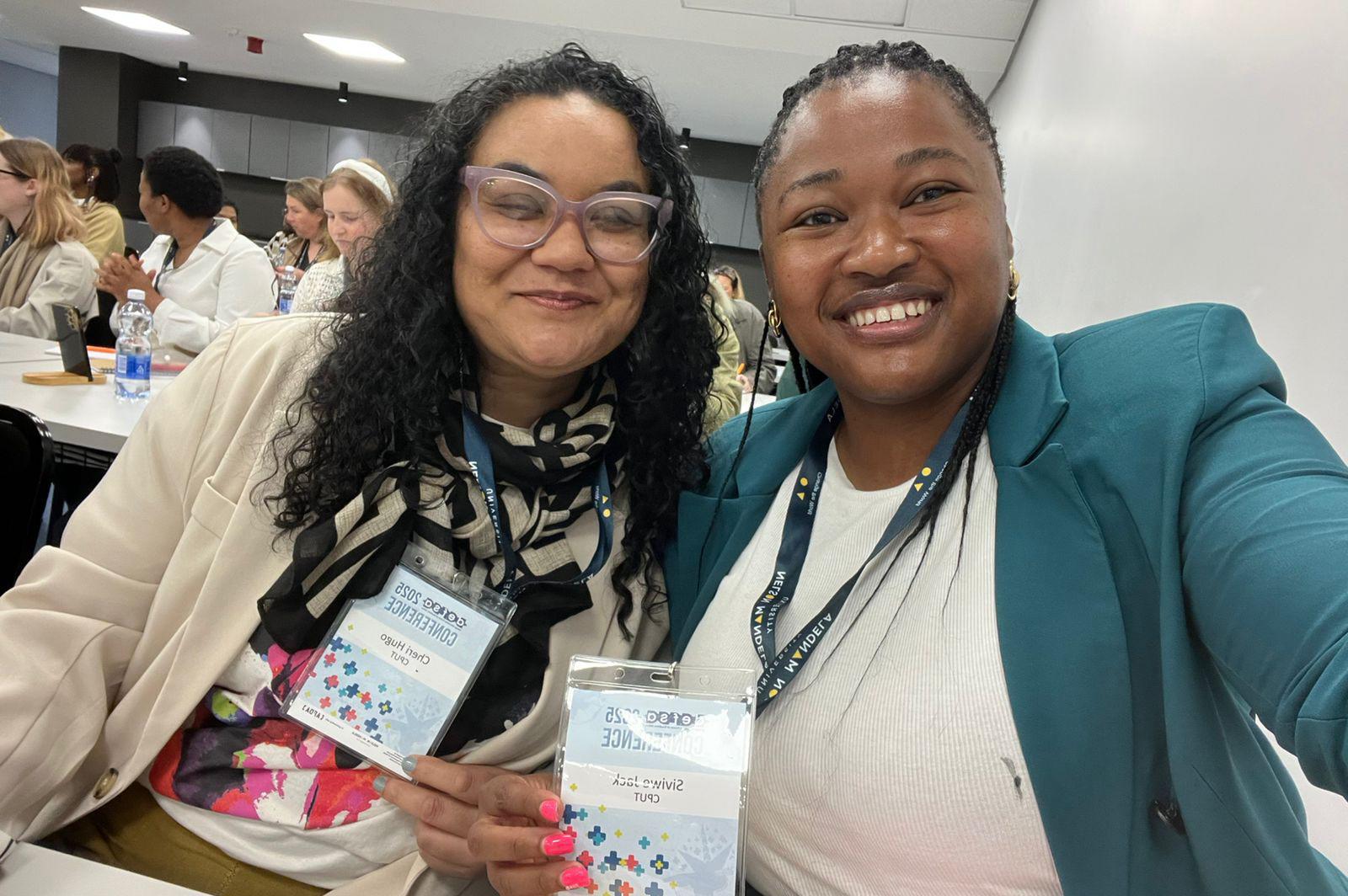
SUSTAINABILITY:Fashion Design lecturer Siviwe Jack presented her research at the Design Education Forum of Southern Africa, promoting sustainable fashion that uses local materials, traditional techniques, and community engagement. Picture: Supplied
By Philani Nombembe
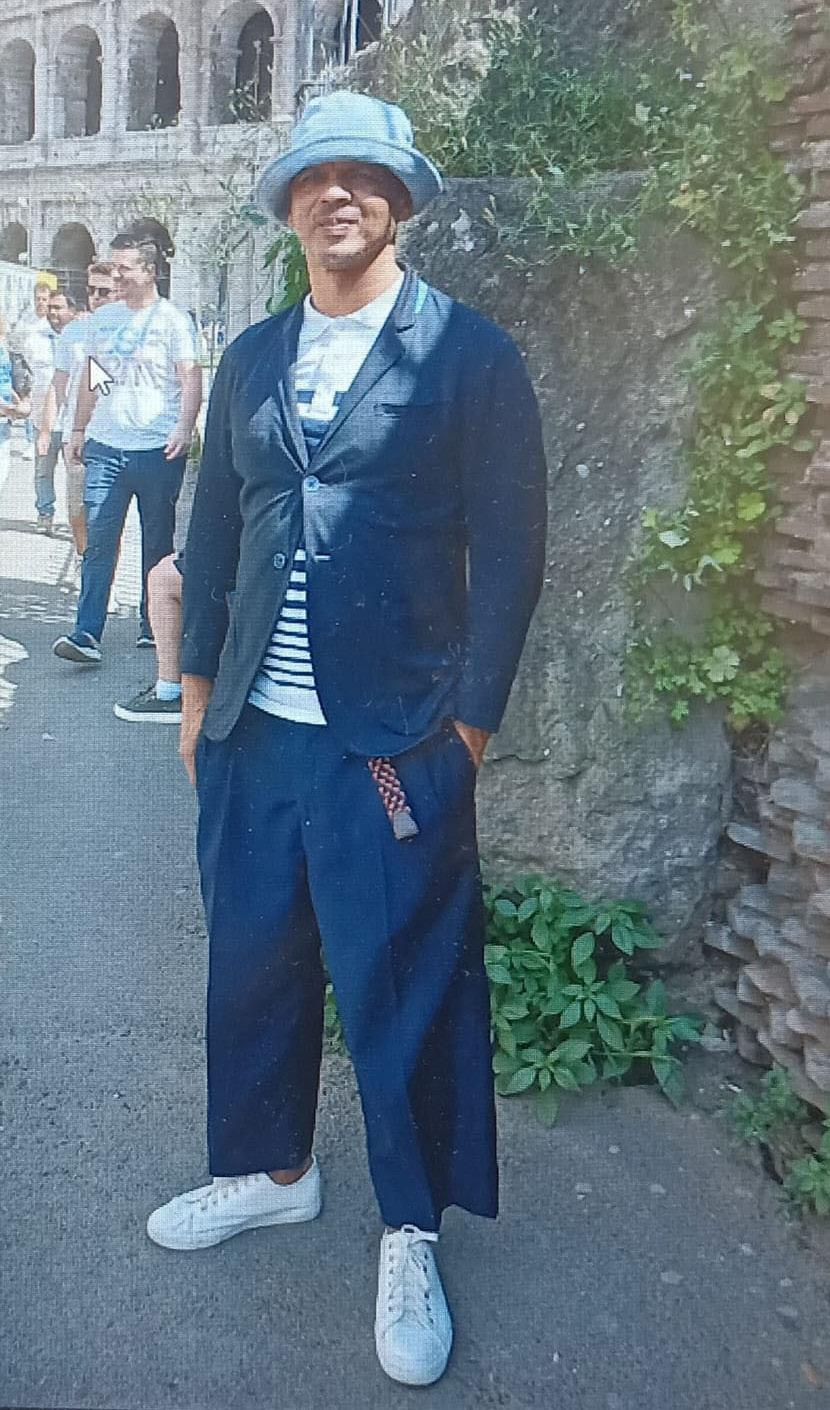

By Philani Nombembe
Visual Communication Design lecturer Samuel Wicomb is turning heads on the District Campus with his distinctive dress sense.
His suits, often paired with cropped trousers that stop above the ankle, are influenced by South African music groups such as Trompies. FID Pulse spoke to Wicomb about his style.
“I was always very fond of kwaito. Even today, I still listen to artists like Brown Dash, Mandoza, Mdu, Mzekezeke, and Arthur, and watch their music videos,” he said.
“I would say the biggest influence on my dress sense comes from the pantsula aesthetic, specifically Trompies. I’ve always admired the widecut, cropped formal trousers, no socks, and All-Stars – and of course, the floppy hat cannot be forgotten.”
Wicomb said he was aware that certain clothing styles carry deeper cultural meaning.
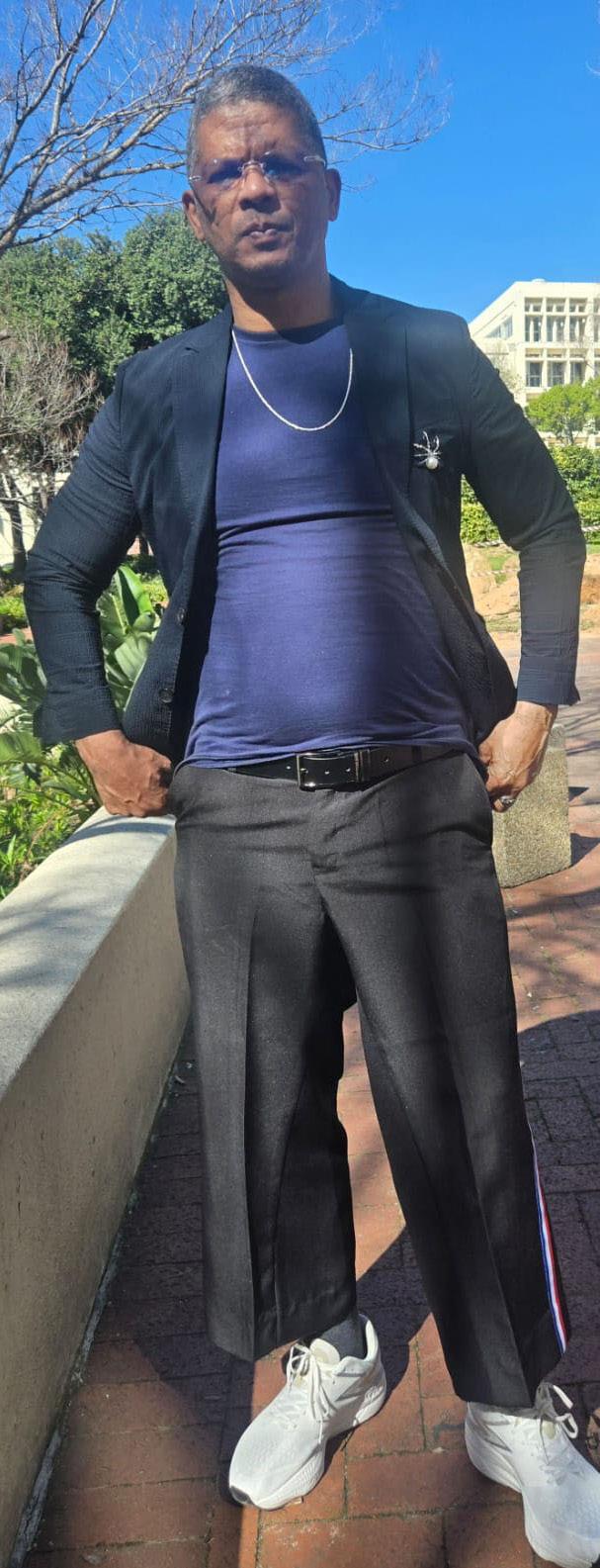
“The fabric and design are interwoven with particularities of certain cultures. The pantsula/ Trompies look is very recognisable in the South African ikasi lexicon,” he said.
“I’ve been stopped numerous times and asked about my clothing choices. When I mention ‘Trompies,’ the reply is usually, ‘Ahhh, now it makes sense.’ From there, the conversation often moves into the kwaito scene. These discussions happen with young and old. This dress sense has allowed me to feel included in a culture I admire.”
He said his outfits are incomplete without the tailored, widened, and cropped trousers, worn sockless.
“In the past, I sometimes felt odd, like I was appropriating. But with current national and international trends embracing wide trousers, I don’t feel so isolated anymore,” he said.

By Philani Nombembe
It was not all about presentations, debates, and collaboration when photography lecturer Manyatsa Vilakazi attended an arts and humanities conference in Thailand this month.
The trip was also an excuse to take in Bangkok’s postcard scenery, sample its culture and lifestyle, and spend time with her hosts. While academics usually return from conferences to report on discussions and future research, Vilakazi’s journey was equally intriguing for the travel it offered.
“It was the perfect excuse to explore the stunning country and capture its vibrant culture through my lens,” she said.
Vilakazi spent five days in Bangkok. One of her key takeaways is the friendliness of the locals.
“I loved how safe I felt wandering the streets at 1am with my camera, capturing the city’s magic. It’s so liberating to have the freedom to create any time of the day with no restrictions,” she said.
“The locals were super friendly and loved being photographed, it was like they were saying: ‘Hey, take my photo’. The Damnoen Saduak Floating Market was a highlight, especially when the rain showed up uninvited. It was at that moment I was reminded that amid life’s storms: pause, breathe, and enjoy the beauty around you even amid chaos.”
Vilakazi did not let the language barrier hinder her from striking up conversations.
“I channeled my inner mime and used sign language, gestures, and a bit of creativity to get my point across,” she said.
She learned a few skills from the streets.
“Thai people are sales ninjas. They know how to persuade you to ‘buy, buy, buy’. I learned a thing or two about being persistent, but maybe not too persistent. It was fascinating to see how they balance friendliness with sales savvy,” Vilakazi said.
She also shared some wisdom about travelling.
“Don’t overplan, leave room for spontaneity,” she said. “Talk with the locals — they will share the best spots, hidden gems, and secret deals. And do bring a face cloth or two or three to wipe away the sweat coz it’s hot, super hot. Know the exchange rate, and luckily, you don’t need a visa.”


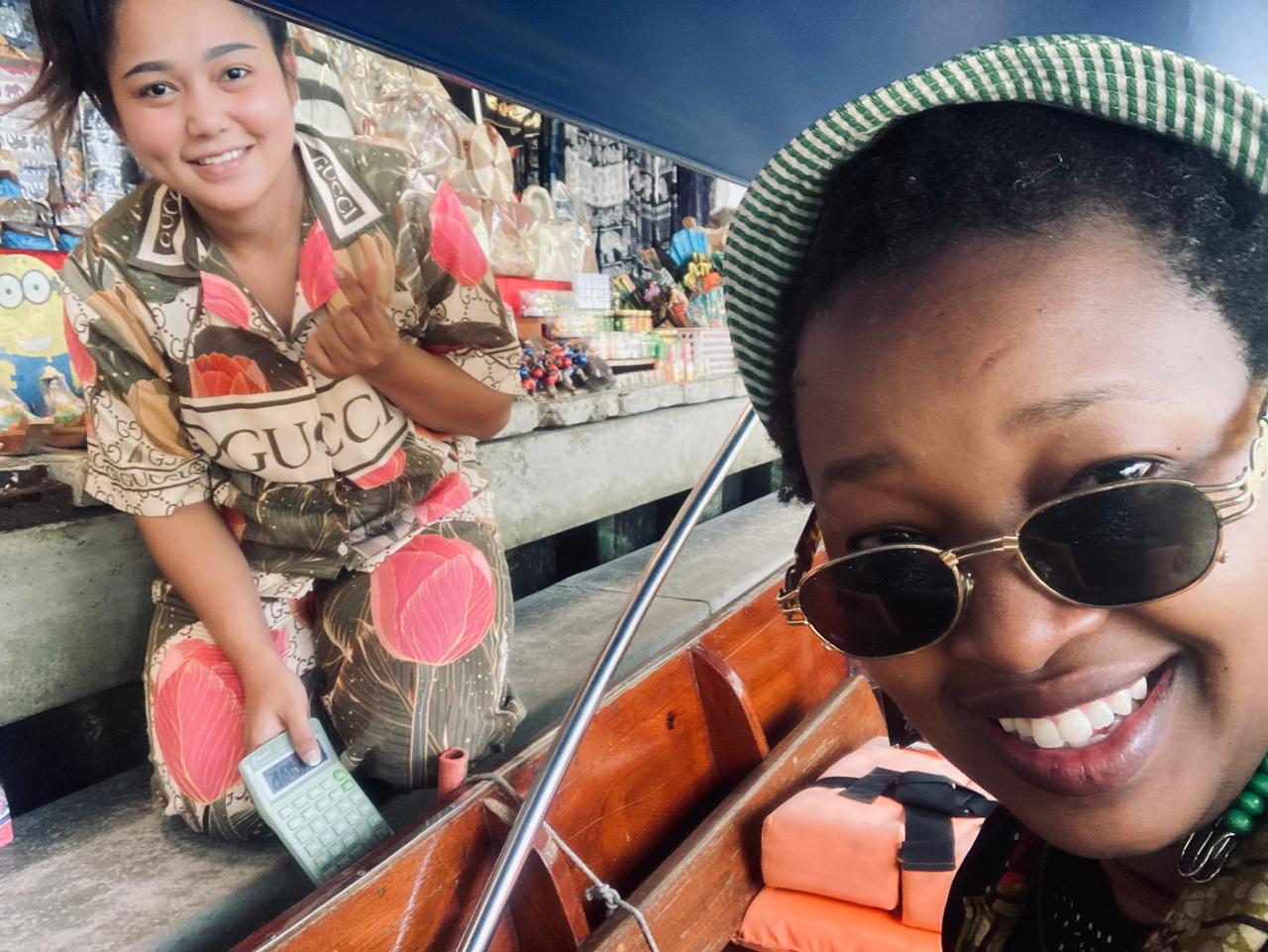
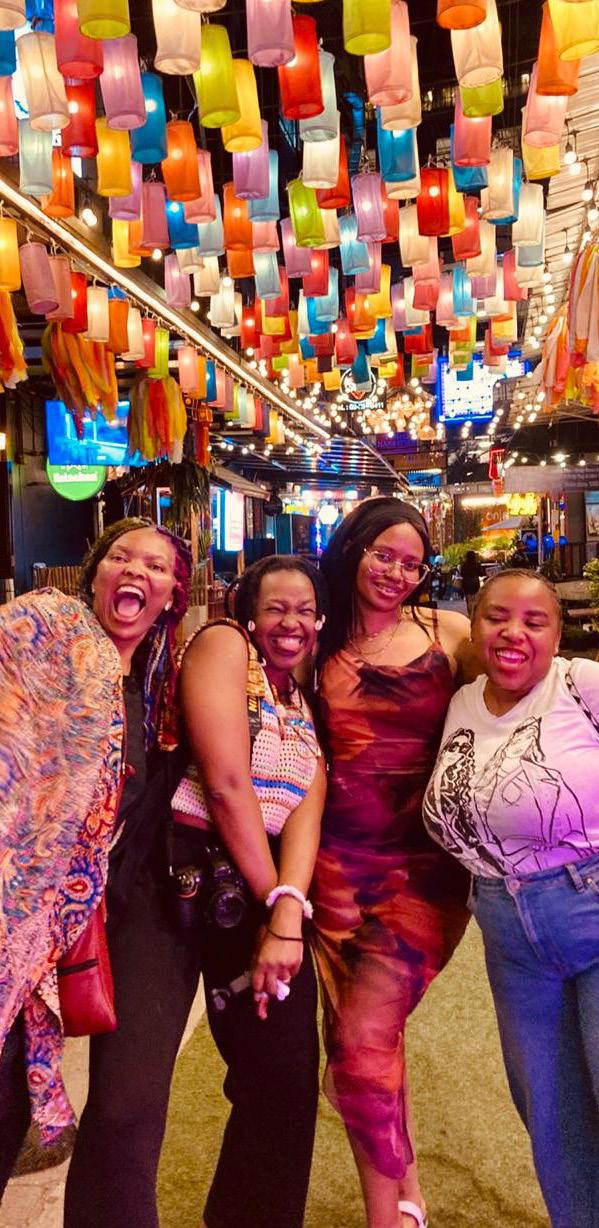

By Philani Nombembe
I have always been drawn to the outdoors — fresh air, birdsong, and wide-open spaces.
As a young journalist, I relished out-of-town assignments. But at the height of my career, Covid-19 struck, shutting down travel and movement. I have yet to shake off the weight of that confinement.
So, on a fair spring day, camera in hand, I joined FID Pulse news editor Jim Mohlala for a walkabout at the District Six campus. We set out to admire the blooming flowers and explore the public spaces, but what we found was far more surprising.
We came across friendly cats, striking birdlife, and an array of indigenous plants in full colour. The campus itself, built on a slope, felt like a discovery. It is a mix of bold architecture and unexpected greenery. For that afternoon, we were accidental tourists in our own city. The last place I frequented that had a resident cat was the Bellville Specialised Commercial Crimes Court.
A stray had made the state building its home, and everyone, lawyers, prosecutors, magistrates, even the accused, seemed fond of it. I was told the superstitious felt uneasy if the cat slept inside their courtroom, while others believed its calm presence brought luck. Yet in the cases I covered, the sentences were harsh. No doubt others were acquitted elsewhere.
After stroking one of the cats, we tried to photograph birds pecking on the lawn. Then we noticed a group of students in white coats conducting a science experiment. Listening to them explain their work left us in awe. They were second-year Environmental Management students. “We are collecting bacteria outside the building, which we will incubate,” said Lindile Belwana.
“We want to compare the growth of bacteria found outdoors and indoors. For this experiment, it doesn’t matter what bacteria we collect. We will identify them later under the microscope.”
Classmate Mihla Memani said their course is in demand.
“We can even go into the mining industry,” he said. He told us he knows 60% of the campus.
“I’m aware of the birds and the vegetation. I have a keen interest in the environment,” he said.
The conversation soon drifted to contemporary issues, and both students’ grasp of current affairs was impressive. Their white coats reminded me of my childhood dream of becoming a doctor. But my mathematics was borderline, so instead I chose to ask questions for a living. The only trace of that childhood dream is my handwriting. It is the kind of handwriting you see on prescription notes.
Sometimes the job I chose makes me feel like a parrot — repeating everything said, just in a clearer and more comprehensive way. Most of the time, it means reporting on other people’s work and inventions, except when I play forensic detective and pore over reams of tip-offs about alleged wrongdoing. Then I become an in-house lawyer of sorts, weighing up which legislation might protect me when exposing certain matters.
But in the end, it is always refreshing to step outside, explore the immediate surroundings, and marvel at what nature has to offer — discovering the plants and animals we share the space with.



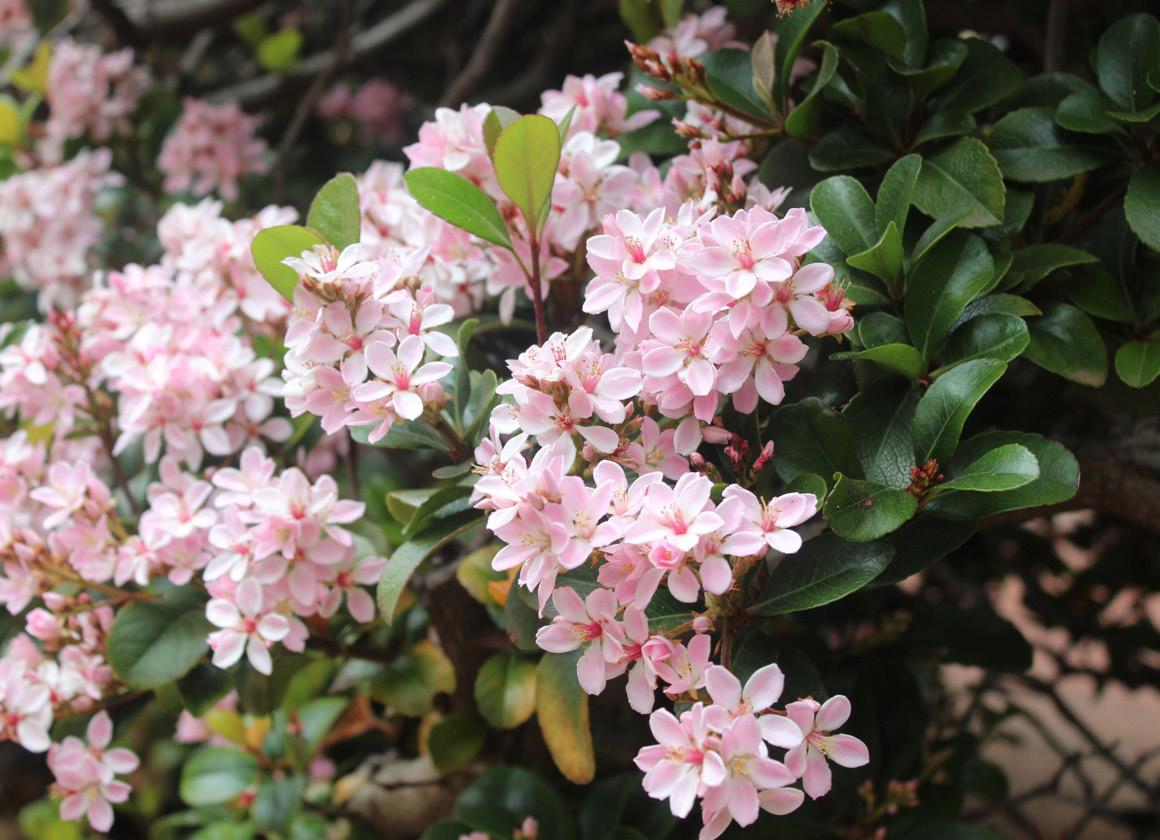


By Philani Nombembe
The FID Innovation Hub has spiced up the Cape Peninsula University of Technology (CPUT) Hotel School’s garb.
The hub has designed bespoke chefs’ uniforms for the hotel school. The incubator for Fashion Design graduates has produced 250 aprons and is now working on 250 jackets and 250 pairs of trousers for the school. Mentor Xolani Jali said the project aimed to give the Hotel School a distinct identity.
“We wanted to create a uniform that reflects the unique brand and culture of the CPUT Hotel School, while building professional pride among students and staff,” said Jali.
The garments are tailored to meet the demands of the kitchen, offering durability, ease of movement, and comfort during long hours of cooking. Jali said the project also allowed the hub to experiment with innovative fabrics and sustainable materials.
The initiative gives students practical industry exposure. “Four students completed their in-service training at the hub, gaining skills in garment manufacturing and experience in collaborative teamwork,” said Jali. “Students benefit from access to experienced mentors from industry and academia, who provide guidance, advice, and support throughout.”


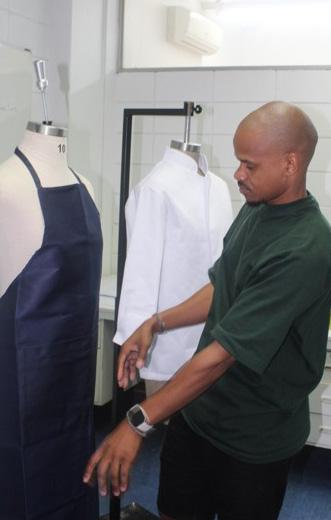
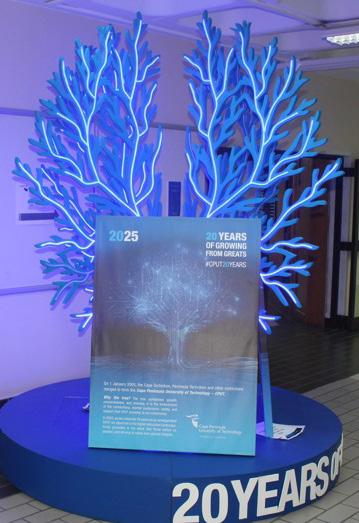
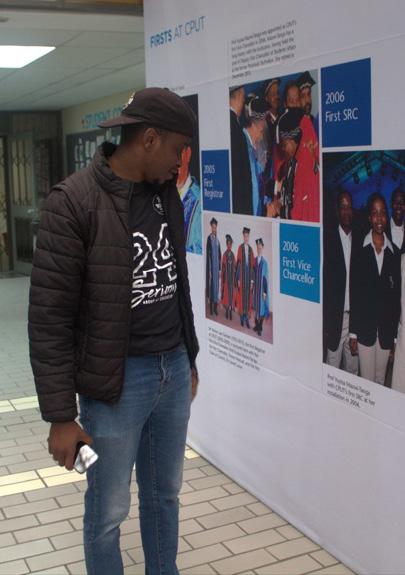
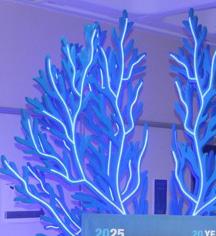
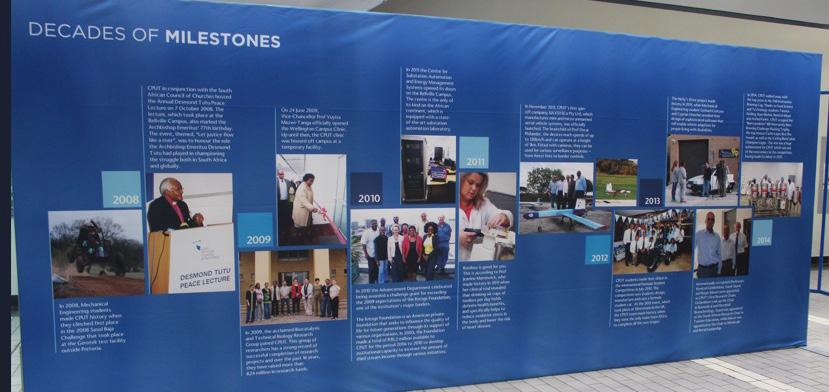
Applied Design
Fashion Jewellery Design & Manufacture
Visual Communication Design
Product & Industrial Design
Design Post graduate studies
Design Foundations ECP
Dr Monica Di Ruvo
diruvom@cput.ac.za
FID Assistant Dean & Acting Research Coordinator
Architectural Technology and Interior Design
Urban & Regional Planning
Information Technology & Multimedia
Architectural Technology
Interior Design
Architectural Technology & Interior Design (ECP)
Urban & Regional Planning
Higher Certificate: Information & Communication Technology Service Management
Information & Communication Technology: Applications Development
Information & Communication Technology: Communication Networks
Information & Communication Technology: Multimedia Applications
BTech and Advanced Diploma in Information & Communication Technology
Post Graduate Studies
ICT Academy
Media and Communication
Film & Video Journalism
Photography
Public Relations Management
Prof Masilonyane Mokhele
Mr Rayner Moodley
Mr Brian Fisher-Holloway
Dr Tabisa Ncubukezi
MokheleM@cput.ac.za
HOD-ATID@cput.ac.za
fisherhollowayb@cput.ac.za bechann@cput.ac.za
NcubukeziT@cput.ac.za